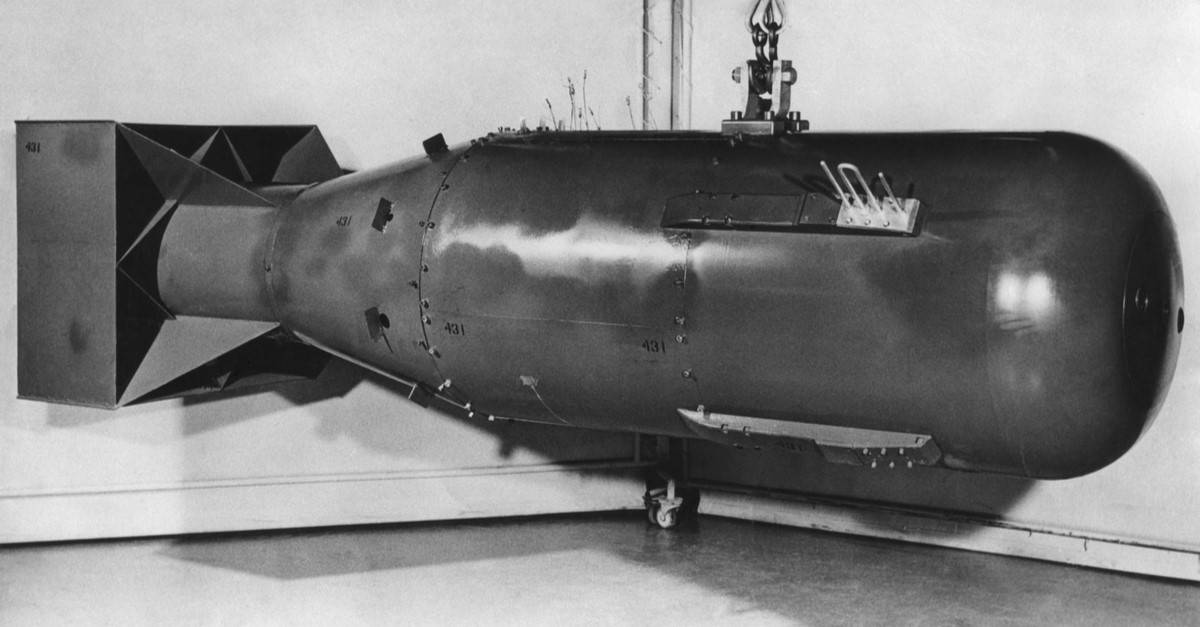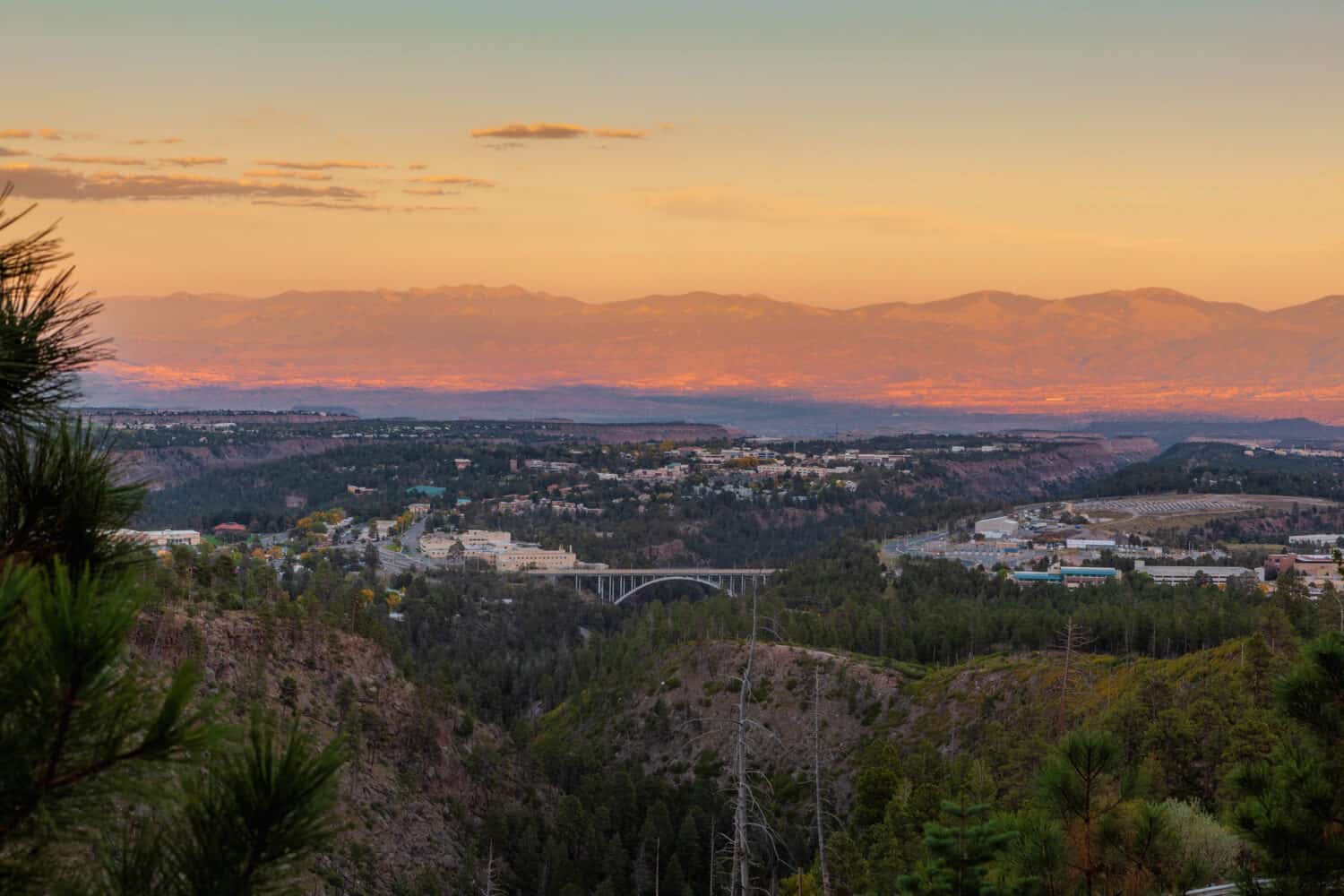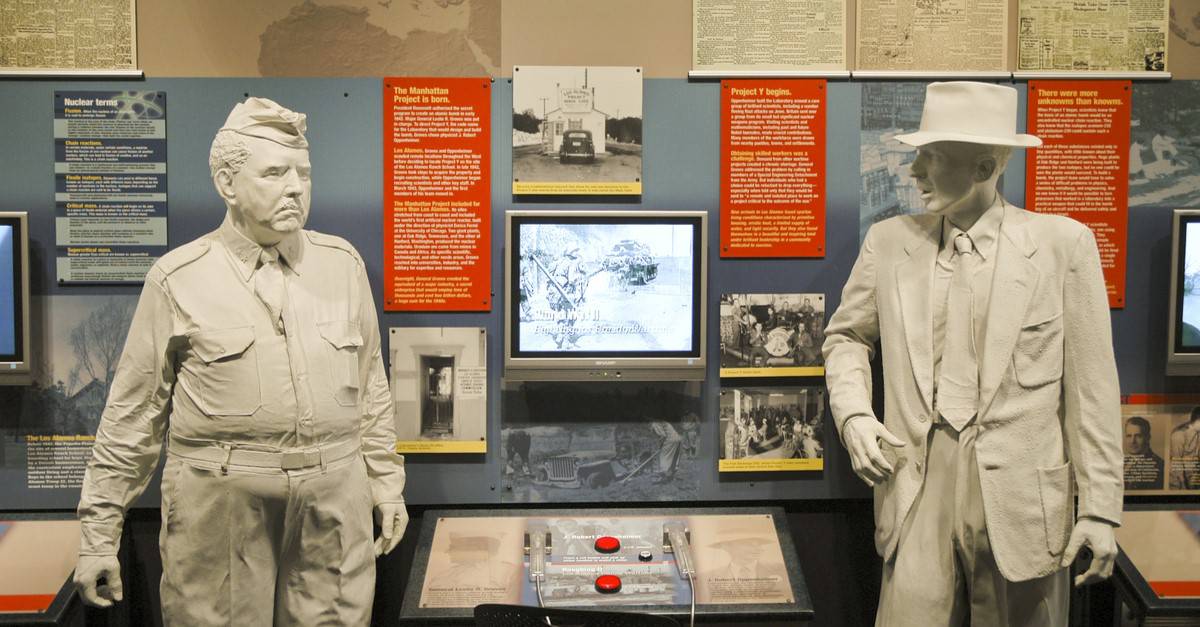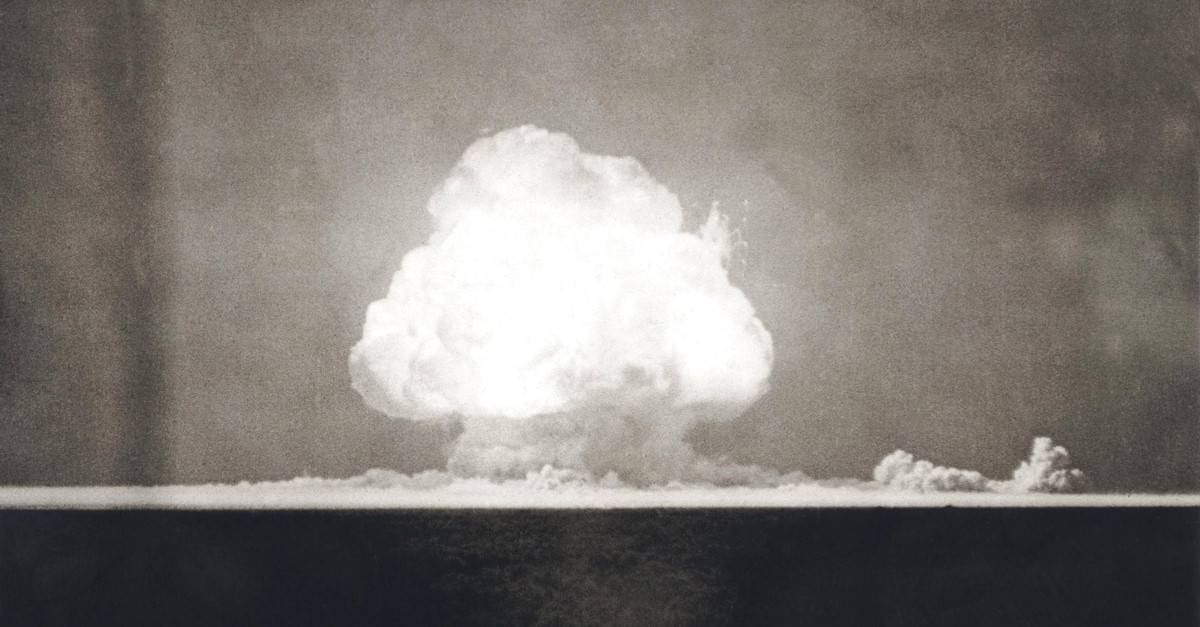The Los Alamos National Laboratory is a premier research institution located in Los Alamos, New Mexico. It was established during World War II as a top-secret facility for the Manhattan Project, which developed the first nuclear weapons. It is located near Los Alamos in New Mexico, an area that scientist Julius Robert Oppenheimer knew well from his younger years. Today, the laboratory conducts research in a wide range of scientific fields, including nuclear science, materials science, and national security.
The History of Los Alamos National Laboratory: What to Know
The Los Alamos National Laboratory (LANL) is the primary site where the secret “Project Y” took place, which is more commonly known as “The Manhattan Project.” The site was the heart of the U.S. initiative to develop a nuclear weapon before any of the Axis powers, especially Nazi Germany, could bring one to bear.
Quick Facts
- Year Founded
- 1953
- Founders
- The research facility was approved by General Leslie Groves
- Industry
- Scientific research in a wide variety of fields
- Headquarter
- The organization is headquartered in Los Alamos, New Mexico
- Key People
- J. Robert Oppenheimer was the first director of the lab, other noteworthy scientists included Richard Feynman, Enrico Fermi and Norris E. Bradbury
- Notable Products
- The lab is noteworthy mostly for producing the first atomic devices, “The Gadget,” “Little boy,” and “Fat Man”
- Website
- https://lanl.gov/
The site in New Mexico, which was not far from Santa Fe, housed a collection of some of the world’s most brilliant engineers and physicists, many of whom were Nobel Prize winners.
The laboratory at Los Alamos worked in conjunction with other secret sites that developed the atomic fuel for the devices that would be designed and constructed at Los Alamos. The famous physicist, Julius Robert Oppenheimer, was the director of the project at Los Alamos, and he was also the person who recommended the location, having lived there for a number of years when he was young.
To keep the location of the lab a secret during the duration of the Manhattan Project, all of the town’s mail was delivered to a single P.O. Box in Santa Fe, New Mexico.
The research and engineering carried out in Los Alamos succeeded in constructing several nuclear bombs during the Second World War. The first was used in a test of an atomic bomb that was called “Trinity,” which was detonated in Alamogordo, New Mexico on July 16, 1945.
While witnessing the detonation, J. Robert Oppenheimer revealed years later that he was reminded of a passage from Hindu scripture: “Now I am become Death, the destroyer of worlds.” Consequently, Oppenheimer is considered to be the “Father of the Atomic Bomb.”
The other two bombs were code-named “Little Boy” and “Fat Man.” Little Boy was dropped on Hiroshima on August 6th, 1945, and Nagasaki was bombed 3 days later on the 9th of August.
The location of the lab became known to the world in the post-war era when the public began referring to the lab as “Los Alamos.” The Atomic Energy Commission, the organization that oversaw the Manhattan Project’s various production facilities, formed a second lab in 1952 to work along with Los Alamos for continued nuclear research.
The second lab, the Lawrence Livermore National Laboratory, was established at the University of California at Berkeley. Los Alamos National Laboratory still remains one of the world’s largest and most important centers for scientific and technology research, continuing cutting-edge work in nuclear physics, renewable energy, space exploration, and others.

The Founding of Los Alamos National Laboratory: How It Happened
The events that led up to the formation of LANL and the Manhattan Project began in 1938 when German scientists Fritz Strassman and Otto Hahn discovered nuclear fission. Consequently, President Franklin Delano Roosevelt received a letter from Albert Einstein and a colleague that recent developments in nuclear fission indicated that the creation of a nuclear weapon could happen in the near future. The letter also warned of Germany’s activities in uranium mining, indicating that they could be developing a nuclear weapon.
Soon afterward, intelligence operatives informed President Roosevelt that Scientists in Nazi Germany were working on a nuclear program. Roosevelt formed the Advisory Committee on Uranium, which consisted of scientists and military officials who would begin researching uranium fission. The name of the committee was changed to the National Defense Research Committee in 1940, then changed again in 1941 to the Office of Scientific Research and Development in 1941, which was led by Vannevar Bush.
The U.S. Army Corps of Engineers joined the effort in 1942, which marks the beginning of a full-fledged military operation to create a nuclear bomb. The operation was originally headquartered in Manhattan in 1942 with U.S. Army Colonel Leslie R. Groves as its leader. In December of that year, President Roosevelt authorized a combined effort of fission projects at the University of Chicago and other research into a weapons program that was called “The Manhattan Project.”
The headquarters of the project were soon moved to Washington D.C. with research being carried out at various universities and labs around the United States and Canada. Roosevelt decided that more secluded locations were needed for the weapons research, and he began looking for a secret headquarters for the main site where the nuclear bomb would be developed.
Physicist J. Robert Oppenheimer, who was involved in nuclear fission research in the Manhattan Project, suggested a secluded ranch area in Los Alamos, New Mexico outside of Santa Fe. He knew of this location because he had spent time in the area during his younger years. The ranch had previously been a large college prep site with dozens of buildings, recreational areas, and living quarters. These amenities, along with the secluded location, made it an ideal choice.
In 1943, Los Alamos Laboratory was established as the location for “Project Y” with Oppenheimer in charge of the program. The bombs took only 27 months to be created, even though Hitler had been defeated in Europe by the time they were completed. Japan was still aggressively waging war against allied forces despite Hitler’s demise, so Roosevelt ordered that the bombs be deployed overseas via airstrike. Japan announced its surrender six days after Hiroshima and Nagasaki had been devastated.
Los Alamos Laboratory Through the Decades
World War II Era
Shortly after the establishment of the Manhattan Project in August 1942, the spearhead of the effort was moved to New Mexico with the founding of Los Alamos National Laboratory on January 1st, 1943. The location during World War II was referred to as “Site Y,” and all the mail to the secret site was sent to a single Post Office Box in Santa Fe.
The construction of the first nuclear weapons was done at Los Alamos while related research and production were carried out at other secret locations in the United States and Canada.
Thousands of personnel worked and lived at the site that had previously been a college prep ranch. The participants in the project included military personnel, chemists, physicists, engineers, and other experts.
The uranium enrichment for the bombs was primarily carried out in a secret location in Oak Ridge, Tennessee. A third location that was also a major arm of the Manhattan Project was the “B Reactor” in Hanford, Washington, which produced plutonium. There were dozens of other sites, but the Los Alamos site was the center of the national effort.
The first working nuclear device created at Los Alamos was “The Gadget,” a nuclear fission device that was detonated in a project called code-named “Trinity.” The next two bombs were a fission gun-type device code-named “Little Boy” and an implosion-type device that was called “Fat Man.”
These two weapons were detonated over Hiroshima and Nagasaki shortly after they were completed, and the Japanese Emperor officially announced his nation’s surrender 6 days after both cities had been hit by the atomic bombs with the combined deaths of over 200,000 Japanese inhabitants.

Post-War era
After the end of World War II, the project director at Los Alamos, J. Robert Oppenheimer, stepped down from the position and was replaced by Norris Bradbury. His primary goal was to make the production of the U.S. nuclear arsenal to be made possible without the help of the world’s leading scientists, carried out by military personnel. In 1947, the official name of the site was changed to Los Alamos Scientific Laboratory.
Los Alamos remained the primary center of development for new nuclear weapons, including the first hydrogen bomb and other nuclear devices of increasing magnitude. The Lawrence Livermore National Laboratory was established in 1952 with the idea of sparking a competitive drive between the two research facilities that would accelerate innovation in nuclear technology.
These two laboratories carried out all of the research for nuclear weapons development throughout the 1950s. These sites also worked on other innovations that included particle accelerators, physics in medicine, and fusion power.
Post-Cold War
The arms race between the United States and Russia reached a turning point when the Soviet Union dissolved in 1991. After this time, Los Alamos scaled down its activities around developing nuclear weapons technology and diversified its research into other scientific endeavors.
Nuclear testing was transitioned into simulation environments that did not use full explosive yields. An improved method for testing breast cancer was developed in 2008, which involved an ultrasound computer solution. Los Alamos was also the site where HIV vaccine research was being conducted in 2010.
Today, Los Alamos National Laboratory’s goals are to help solve global problems of nuclear proliferation and improve national security through advanced science, intelligence activities, and counterterrorism. The LANL works in cooperation with the Department of Energy and the National Nuclear Security Administration (NNSA) to work toward its goals.
Three of the main facilities at Los Alamos are the Center of Integrated Nanotechnologies, Los Alamos Neutron Science Center, and The National High Magnetic Field Laboratory. The LANL is also engaged in a data research effort to track and prevent the spread of infectious diseases by analyzing data from Google, the U.S. Census, and other large data pools.
What Are the Most Important Inventions From Los Alamos National Laboratory?
The Gadget
“The Gadget” was the code name for the first nuclear explosive device that was ever detonated on Earth. The test was code-named “Trinity,” which was also the name of the test site located near Alamogordo, New Mexico where the device was detonated.
The test took place at 5:30 a.m. on July 16, 1945. The director of the project, J. Robert Oppenheimer later revealed that the explosion reminded him of an ominous line of Hindu scripture, spoken by the god, Shiva when he transforms into a world-destroying entity.
Little Boy
Little Boy was the code name for the first nuclear bomb ever deployed in a live combat situation, dropped from a B-29 aircraft at 31,000 feet on August 6, 1945, over Hiroshima, Japan. The uranium-type fission device exploded 1500 feet above the ground, and its destructive power was estimated equivalent to 15,000 tons of TNT.
Fat Man
The second bomb detonated during World War II was “Fat Man,” an implosion-type device that was fueled by plutonium. It was dropped from a B-29 code-named Bock’s Car over Nagasaki from 29,000 feet, exploding 1650 feet over the city with an explosive yield of 21,000 tons of TNT. The original target had been the Kokura Arsenal but was switched to Nagasaki during the mission due to weather conditions.

How Does Los Alamos National Laboratory Make Money?
Los Alamos National Laboratory is a research organization overseen by the U.S. Department of Energy. To carry out the research that it conducts on behalf of the U.S. government, it is provided with federal funding. The budget for the overall operations of the organization in the most recent fiscal year was approximately $3.875 billion. 71% of the funds were used in weapons programs for the National Nuclear Security Administration.
Los Alamos National Laboratory Notable Controversies
Mishandling of classified information
In 1999, Scientist Wen Ho Lee was accused of improperly downloading classified information about weapons test simulations and codes, placing the data on tapes, and removing them from the laboratory. Lee spent 10 months in jail awaiting trial, after which he pled guilty to one count of breaching security, and the other 58 counts were dismissed. The judge apologized to Lee for the long period of incarceration. It was suspected that Lee might have shared data with China, but the location of where Lee sent the data was never verified.
Missing hard drives
In the year 2000, two hard drives that contained sensitive data went missing from a secure area, but they were later located behind a photocopy machine. In 2004, four hard drives containing classified data were missing. Two of them were found to have moved to another building, but the other two couldn’t be located. It was revealed that the missing hard drives were not, in fact missing, but that there was a labeling problem in the inventory system that incorrectly led staff to conclude that disks were missing.
Potential nuclear disasters
In 2011, eight plutonium rods were placed dangerously close to each other while they were being photographed. The scientists protested in anger, and the lab was shut down due to improper observations of protocols. The Department of Energy sought new management for the facility. In August 2017, erroneous plutonium storage nearly caused an accident, and the staff failed to report the incident according to the procedure.
The image featured at the top of this post is © United States Department of Energy/Public Domain CC0 .








